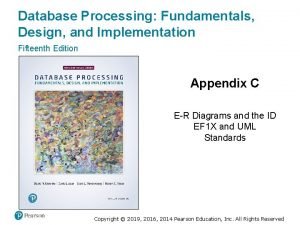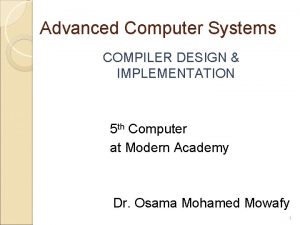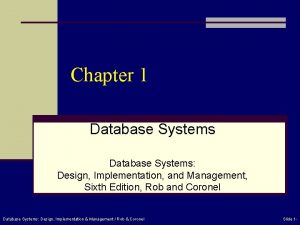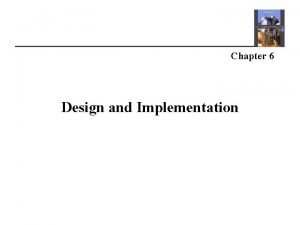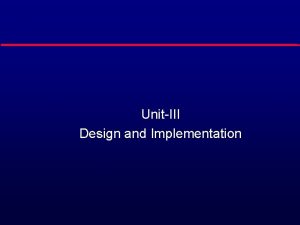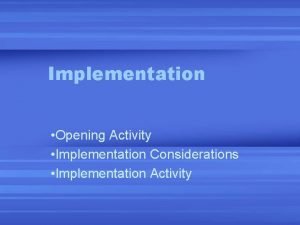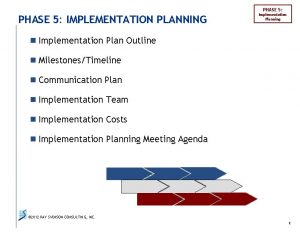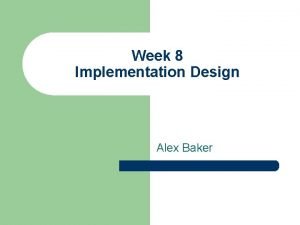Design and implementation Chapter 7 Lecture 1 Design











- Slides: 11

Design and implementation Chapter 7 – Lecture 1

Design and implementation • Software design and implementation is the stage in the software engineering process at which an executable software system is developed. • Software design and implementation are inter-leaved activities. • The level of detail in the design depends on the type of system and whether you are using a plan-driven or agile approach.

Object-oriented design ▫ Process stages: �activities to design the system architecture �identify objects in the system �describe the design using different object models �document the component interfaces

Object-oriented design • These models may be produced: ▫ Static models -> describe the static structure of the system in terms of object classes and relationships �class models �generalization models �association models ▫ Dynamic models -> describe the dynamic interactions between objects �sequence models �state machine models

Interface specification • Object interfaces have to be specified so that the objects and other components can be designed in parallel. • Component interfaces must be defined precisely so that other objects can use them. • A UML interface stereotype may be used to define interfaces.

Design and implementation Chapter 7 – Lecture 2

Developing Software • When developing software, you should always consider the possibility of reusing existing software, either as components, services or complete systems.

Design patterns • A design pattern is a way of reusing abstract knowledge about a problem and its solution. • A pattern is a description of the problem and the essence of its solution.

Configuration management • Configuration management is the process of managing changes to an evolving software system. It is essential when a team of people are cooperating to develop software.

Host-target development • Most software is developed on one computer (the host), but runs on a separate machine (the target). • More generally, we can talk about a development platform and an execution platform. ▫ A platform is more than just hardware. ▫ It includes the installed operating system plus other supporting software such as a database management system or, for development platforms, an interactive development environment.

Open source development • Open source development involves making the source code of a system publicly available. • This means that many people can propose changes and improvements to the software.
 01:640:244 lecture notes - lecture 15: plat, idah, farad
01:640:244 lecture notes - lecture 15: plat, idah, farad Network security design and implementation
Network security design and implementation Uiecu hours
Uiecu hours Cobit 2019 exam questions and answers pdf
Cobit 2019 exam questions and answers pdf Accessible learning experience design and implementation
Accessible learning experience design and implementation Azure deployment planning services
Azure deployment planning services Database processing 15th edition
Database processing 15th edition Channel design and implementation
Channel design and implementation Advanced compiler design and implementation
Advanced compiler design and implementation Database systems: design, implementation, and management
Database systems: design, implementation, and management Replacement strategy in distributed shared memory
Replacement strategy in distributed shared memory Design and implementation of data plane.
Design and implementation of data plane.






